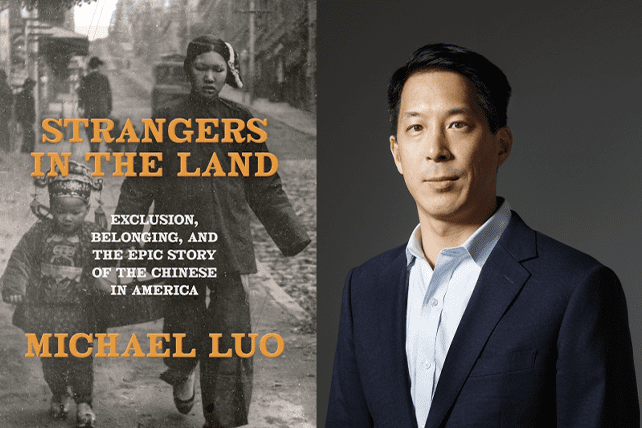While Gibson was a vocal advocate for the Chinese immigrants, becoming one of the few Americans who spoke out against the 1882 Chinese Exclusion Act, he was “obsessed with Chinese women, viewing Chinese female prostitutes as a threat to White families,” writes Luo. In California, missionaries bent on stopping the sex trade joined forces with immigration opponents in barring entrance to many Chinese women. (Many, Luo argues, were wives coming to join their husbands.)
White women, meanwhile, were fixtures in mission work. In the late 19th and early 20th centuries, said Chang, Donaldina Cameron, a Presbyterian, ran a missionary society in San Francisco committed to helping Chinese women who had been caught up in the sex trade or otherwise badly treated after immigrating. Under Cameron’s watch, they were also expected to pray, entertain guests and attend classes.
Luo, who spent a lot of time digging through the archives of Philadelphia’s Presbyterian Historical Society, found that some of the Chinese were already Christians. Though the voices of Chinese appear only rarely in the historical records, when they do, Luo says, it’s often because they spoke English and because they are Christian converts.
Yung Wing, who converted to Christianity at a missionary school in Macau before sailing to New York, became the first Chinese immigrant to attend Yale University, starting as a freshman in 1850.
Four years later, he boarded another ship in New York and returned home, determined to help others come to China to be educated. Leveraging his connections in China and the United States, he established the Chinese Education Mission in Hartford, Connecticut. Per an agreement with the Qing government, families who housed the mission’s students were forbidden to proselytize, but, Luo writes, “there is little doubt that the opportunity to model Christian living for the students motivated many of them.”
Yung and others mentioned in Luo’s book illustrate the dynamic connection between Chinese immigrants and their country of origin, with many choosing to make the challenging, long trip home after working on the railroad or in American factories, and some returning to America before the passage of the Exclusion Act made it impossible.
“The missionaries didn’t do a good job of spreading Christianity in China, but they did do a good job of bringing a Western style of learning to China,” said John Haddad, a professor of American studies at Penn State Harrisburg, who has written several books on the American relationship with China. Tseng pointed out that when the Qing dynasty fell, the Chinese educational system was rebuilt on Protestant missionary networks.
Hints of the faith practices Chinese immigrants brought with them show up now and then in the archives. In the wake of an 1871 massacre in which at least 18 Chinese Los Angeles residents were lynched and shot, Luo writes, Daoist priests traveled from San Francisco to participate in Daoist and Buddhist ceremonies to honor the dead.
The missionary zeal of the mainline Protestant organizations began to fade toward the end of the 19th century, and many who had spoken up on behalf of Chinese immigrants retreated, “becoming less invested in turning back the tide of exclusion,” said Chang.
The racism directed at Asian Americans, a constant for more than a century and a half, may be why we don’t hear more about Chinese immigration. “Because it doesn’t fit neatly into the American narrative of progress, I think sometimes it’s forgotten, or left out,” Chang said.
It also has been obscured by Chinese immigration, a flow fractured by years of exclusion. Chinese-American churches of today are frequently more theologically conservative and less concerned with politics than those experienced by 19-century immigrants. “It’s very much an indigenous movement of Chinese-style denominations, if you can really call it that,” said Tseng, who noted that some younger Chinese Christians were more liberal.
But as the Chinese experience of Christianity in America continues to evolve, Luo, Tseng, Haddad and other writers have laid down markers — potent reminders of the way faith, race, bigotry and politics molded immigrants, leaving an indelible mark on America.
This article originally appeared here.

